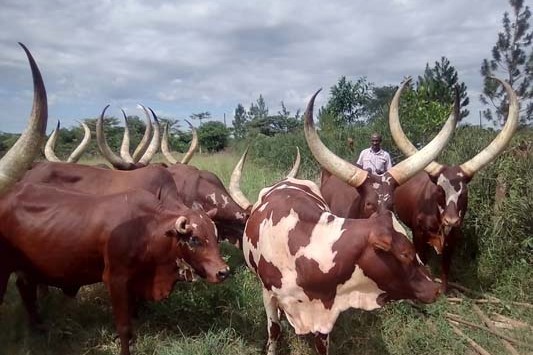Sensors detecting the colour of pasture can determine pasture nitrogen requirements. Anne Lee reports.
Onfarm testing of technology that enables the fertiliser spreader to “see” how much nitrogen the pasture ahead of it needs and then adjust the application rate as it goes is showing some promising results.
But it’s also got researchers and farmers thinking about how the information it provides could be used to identify underlying agronomic issues and become a powerful precision farming tool to improve nitrogen use efficiency.
Lincoln Agritech group manager of precision agriculture Dr Armin Werner, project manager Chavi Ekanayake and a team of farmers, consultants and researchers are running onfarm trials on dairy farms in Canterbury and say the sensors work by measuring the light reflected back to them in the visible and in the invisible near infra-red spectrum.
Armin explains that at a basic level the less visible red colour the sensor picks up, the more green there is in the pasture and that can be correlated back to the amount of nitrogen in the plants. If the plant has plenty of nitrogen it will have high levels of chlorophyll and be a deeper green. But if it’s in need of nitrogen it will begin to break down the chlorophyll to get to its components – one of which is nitrogen, resulting in a less green up to yellowish plant colour.
“It’s a survival strategy for the plant. It degrades the chlorophyll into its constituent molecules, sacrificing it so it can get at the nitrogen which is necessary for protein and growth.”
The sensor can also determine the amount of biomass or yield in the pasture through the amount of light reflected in the near infra-red spectrum due to a correlation with the water content in the plant. A high vigour canopy reflects more near infrared radiation. Armin says detailed, scientific studies carried out on plot experiments by Lincoln Agritech and others in the scientific literature showed the optical sensing technology could accurately be used to assess differences in nitrogen and biomass levels of pastures and that varying the amount of nitrogen applied according to those assessments could lead to improved nitrogen use efficiency and reduced nitrogen leaching.
“We ran a scientific project which was able to show we could use up to 30% less nitrogen but still get the same grass growth and cut nitrogen leaching by 13%.”
Farmers had shown strong interest in the technology but were looking for proof of concept under realistic farming conditions, he says.
Initially an onfarm study was set up on one farm using six paddocks sited under one pivot irrigator thanks to funding from the Ministry of Primary Industry’s (MPI) Sustainable Food and Fibre Futures (SFF) fund.
Three of the six paddocks were receiving variable rate nitrogen applications based on the sensor readings while the other three received a typical blanket rate across the whole area.
Two seasons’ worth of data from that one farm showed promising results and commercial fertiliser spreading companies in Canterbury began installing optical sensors on their vehicles.
Last season five more farms joined the SFF funded Lincoln Agritech study.
“We now work with six farms in total, each with six to eight paddocks in the study and one half of them receiving either the variable rate based on the sensor or blanket applications of nitrogen.
“That’s helping to give us more information and we’re seeing good trends in the data but it’s still not statistically robust enough from a science perspective and we’re preparing for what is now the fourth year of study so we have two seasons of data from the larger group of farms.”
Pasture yield gains of about 500kg to 1.2 tonnes drymatter (DM)/ha have been found in these limited onfarm trials and a reduction in nitrogen leaching has been found based on modelling – although its less than 8%. Although these results are not statistically proven differences, the trend is encouraging, he says.
The system is typically set up to apply more nitrogen to areas showing poorer growth or less “greenness” and less nitrogen to those areas where pasture already has high cover levels and more “greenness.”
But farmers and researchers have been considering how the maps and data being provided by the optical sensors could be used in other ways. The sensors may be picking up areas where there are underlying issues causing the poorer growth and, in those areas, additional nitrogen might not be the answer to increasing yields.
“In these situations, how the system is applied is a strategic decision based on the farmer’s understanding of the farm.
“It may be that applying less to the poorer performing area is actually the best response but the information we can get from the sensors can help the farmer identify those areas in the first place – they may know there’s variability across their paddocks but this maps it out precisely.”
Other fertility issues such as low sulphur can cause pastures to yellow so it is important other fertility factors are kept to standards of good farming practice for all paddocks too, he says.
Canterbury dairy farmer Garth Janson has joined the trial and says it is showing positive trends in terms of better pasture production. Four contractors have spreaders fitted with the optical sensors including Ellesmere Transport – Garth’s contractors.
“The benefits we’re getting from using the sensors more than covers the extra that Ellesmere is charging for the service,“ Garth says. The optical sensors pick up the areas where cows congregate, such as towards the front of paddocks, and deposit urinary nitrogen, he says.
“The variable rate application can then very accurately alter application rates accordingly.”
The 190kg N/ha/year cap for every paddock will make technologies such as the optical sensing variable rate another tool in farmers’ tool boxes. Garth says they’ve already been able to use the detailed maps that show the variation across the whole paddock to identify and correct other issues such as areas where older grasses like browntop had come back.
“It’s technology very much worth persisting with,” he says.





